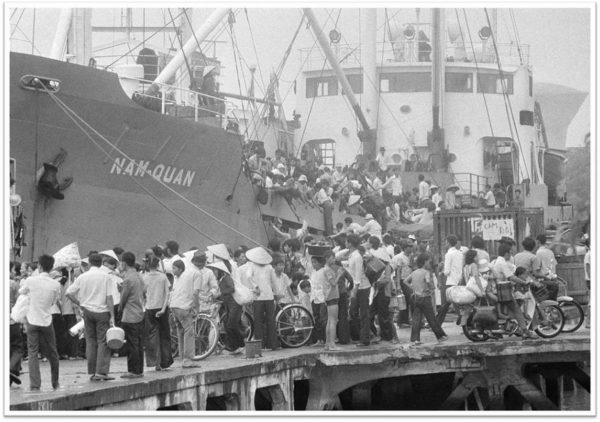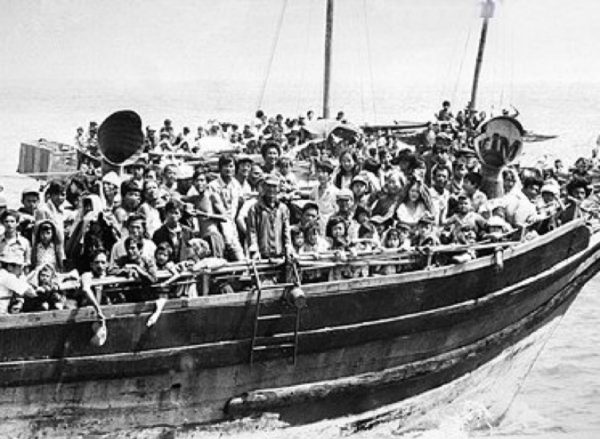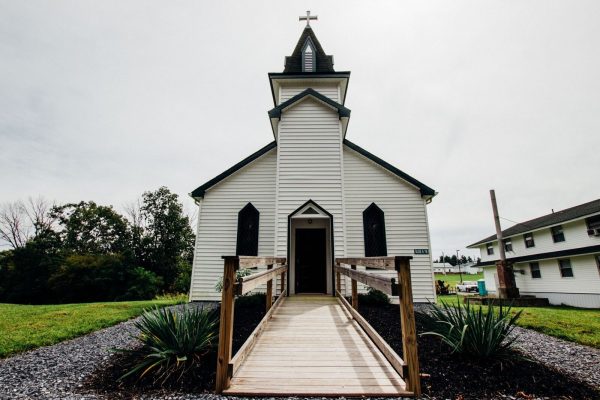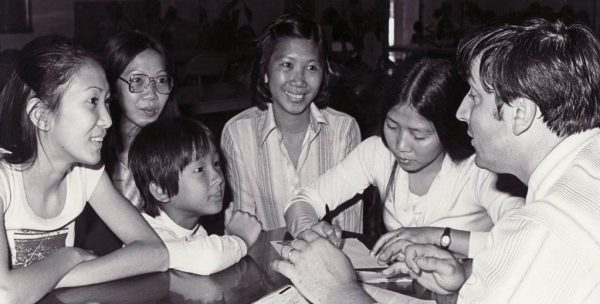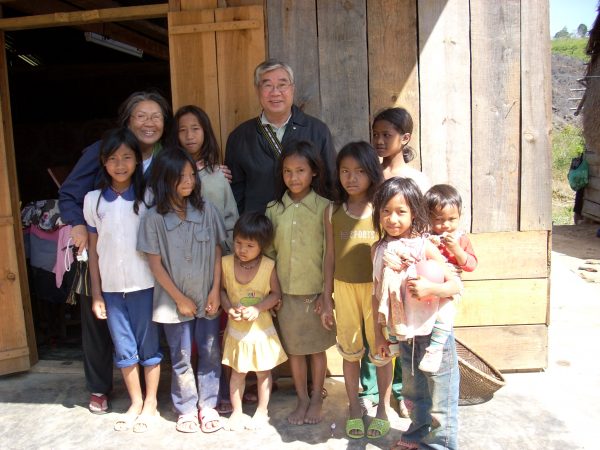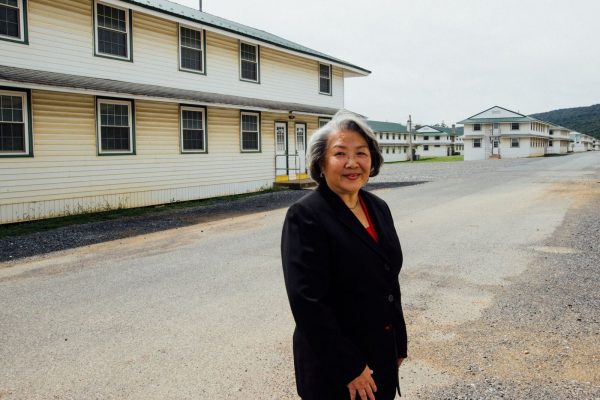Editor’s note: The text supplements audio and is not a transcript. To get the full story, please listen.
Ho-Thanh Nguyen was born the year the Vietnam War began.
She grew up in Saigon, the eldest of six children in a Catholic family for whom education was the top priority. Her father had left North Vietnam over a decade before Ho-Thanh was born, in pursuit of what he believed would be a better business and political climate for someone of his faith and aversion to Communism.
Ho-Thanh says they weren’t wealthy, but her father’s accounting practice did well enough to support their studies. Ho-Thanh stayed on track with school, despite the war and having to flee once during the 1968 Tet Offensive. In 1972, she enrolled at the Saigon University Law School.
Then Saigon fell.
LEAVING VIETNAM
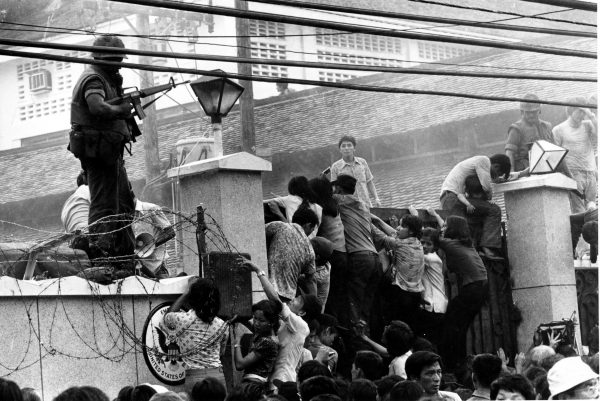
PHOTO: Vietnamese people scale the wall of the U.S. Embassy in Saigon, trying to get to the helicopter pickup zone, just before the end of the war on April 29, 1975. (AP Photo/Neal Ulevich)
Ho-Thanh and her five siblings fled immediately, leaving their parents and grandparents behind. She was 20 years old.
Ho-Thanh says she feels lucky she and her siblings survived their journey across the South China Sea to the Philippines, which took more than a week. Others have recounted being stuck on the water for longer, and witnessing passengers committing suicide and being raped and killed by pirates. Tens of thousands of people, maybe more, perished on the water.
Ho-Thanh says she blocked out much of her time at sea, but has post-traumatic stress disorder from going without barely any food or water for over a week.
ARRIVAL
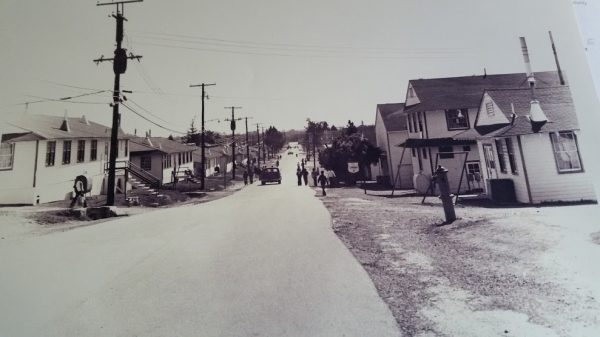
PHOTO: Around 22,000 refugees were resettled through Fort Indiantown Gap in 1975, according to archives provided by the Pennsylvania Historical and Museum Commission. Four military bases hosted refugees from Vietnam, Laos and Cambodia upon arrival to the United States. (Credit: provided by Ho-Thanh Nguyen)
Before getting to Fort Indiantown Gap, Ho-Thanh says she had no expectations.
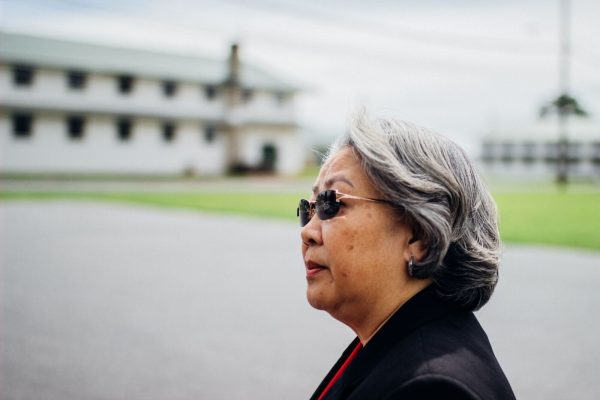
PHOTO: Ho-Thanh Nguyen visiting of the few barracks remaining from that time at the Gap today. (Credit: Tim Lambert/WITF)
She told us she remembers the early June air felt frigid compared to what she was used to in Vietnam, where the temperature year-round is safely above summertime peaks in the Harrisburg region.
Ho-Thanh also recalls being scared at first. But she says she quickly found friends among other refugees at the Gap and took comfort in praying at a chapel which remains standing on the base next to Pennsylvania National Guard Military Museum.
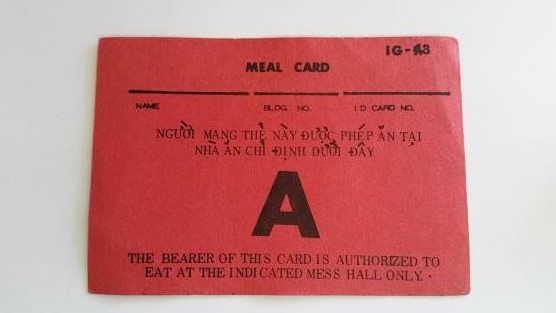
PHOTO: Ho-Thahn Nguyen still has her Fort Indiantown Gap meal card from 1975. (Provided by Ho-Thahn Nguyen)
Ho-Thahn remembers that military personnel were very accommodating, as illustrated by the anecdote related below.
Ho-Thanh recalls babysitting younger children so their parents could concentrate on filling out paperwork and figuring out their next steps. Normally, that entailed finding a foster family or sponsor through a church in the area. Ho-Thanh and her siblings met theirs when Boy Scouts from nearby Lebanon came to the Gap to help welcome young refugees. The troop leader was William Slike. He and his wife, Louella, would ultimately agree to sponsor the children.
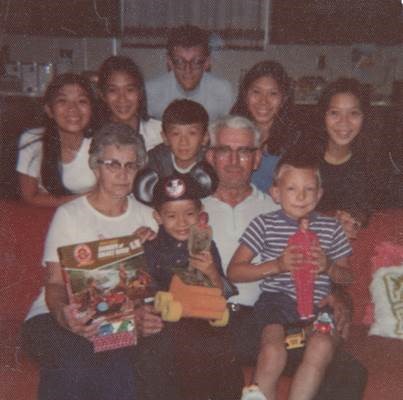
PHOTO: Front row: Ho-Thahn’s youngest brother Viet-Dung, then 5 years old, sits between Louella and William Slike. Their grandson Billy is at the far right. Second row, from left: Ho-Thahn’, Lien-Huong, Viet-Hung, Thanh-Nhan and Huong Lien. The Slikes’ son William Jr. is at the center behind the rest of the family. (provided by Ho-Thahn Nguyen).
LIFE IN THE UNITED STATES
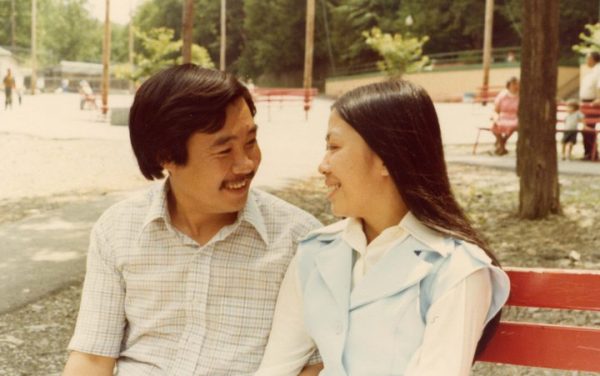
PHOTO: Ho-Thahn and Bang Nguyen in 1976. They married the following year. (provided by Ho-Thahn Nguyen)
Ho-Thahn soon met her husband Bang Nguyen. Bang was resettled through Fort Indiantown Gap – although they didn’t encounter one another there, instead meeting through the Vietnamese Catholic community in Harrisburg. They bonded over their shared faith, culture and experiences. But as far as what Ho-Thahn first liked about Bang – that’s a bit more universal, as she explains below.
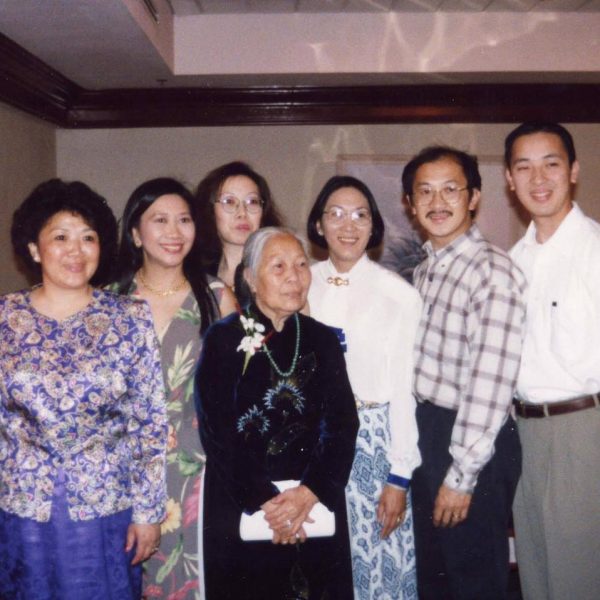
PHOTO: Loi Nguyen, front/center, surrounded by her children Ho-Thahn, Thahn-Nhan, Huong-Lien, Lien-Huong, Viet-Hung and Viet-Dung. (provided by Ho-Thahn Nguyen)
Ho-Thahn’s parents made it to Santa Ana, Calif., seven years after they’d last seen their children in Saigon. Her younger siblings joined them. But Ho-Thahn and Bang were already married with one child and another on the way, so they stayed in Central Pennsylvania. Ho-Thahn says money was tight, so she didn’t actually see her parents for another seven years. But she says phone calls kept her close with her parents in the meantime.
Ho-Thahn and Bang eventually started a small scholarship foundation for Vietnamese students, which took them back to their home country on multiple occasions. They also went on faith and medical missions.
Ho-Thahn also spent decades working and volunteering with nonprofit organizations in the Harrisburg area. She saw that they provided vital support, but clients’ needs often lingered unmet afterward – particularly for women and refugees. She founded the Pennsylvania Immigration and Refugee Women’s Network, known as PAIRWN, in 2000.
What it means
Learn more about how Ho-Thanh’s journey from refugee to advocate and resettlement policy shifts in the meantime HERE.
Find stories of others profiled in WITF’s Vietnam War series.
The Vietnam War: WITF Stories project is supported by:


